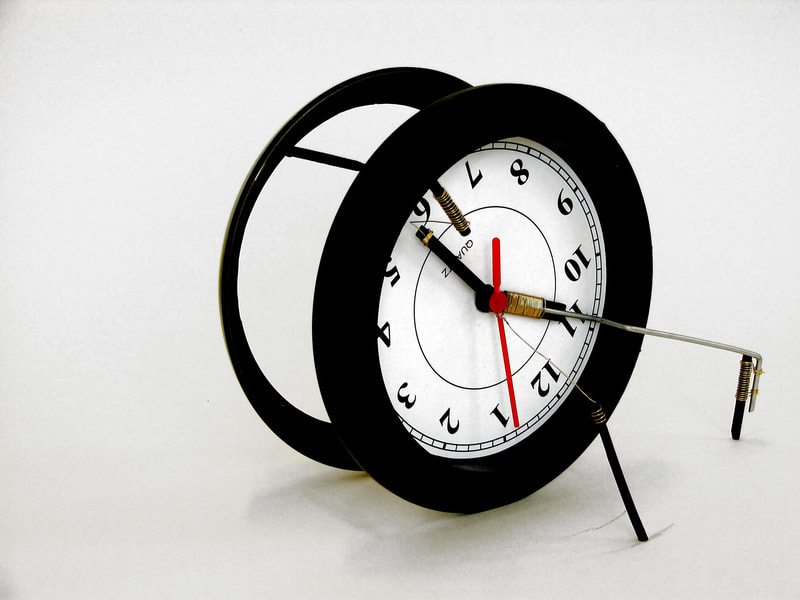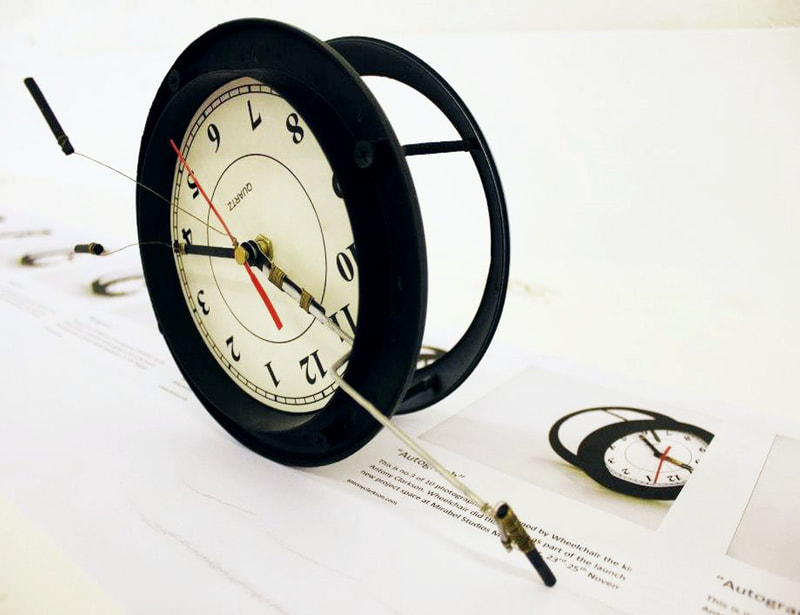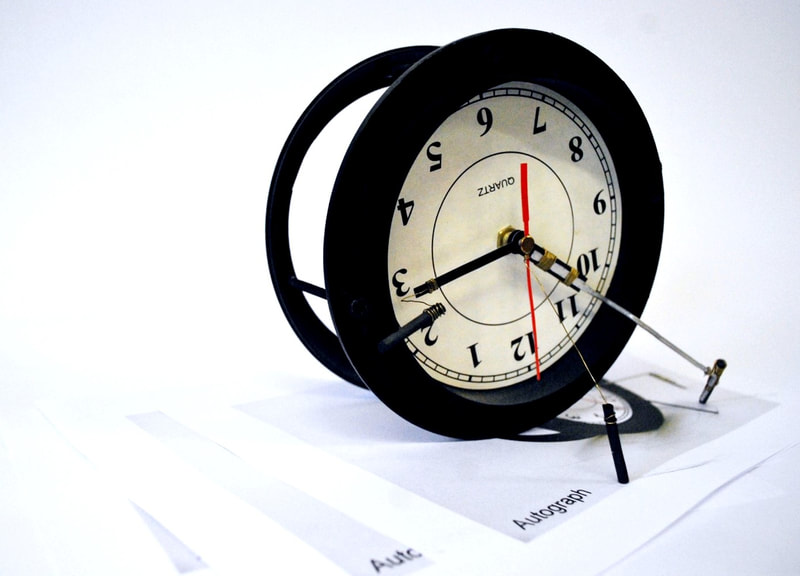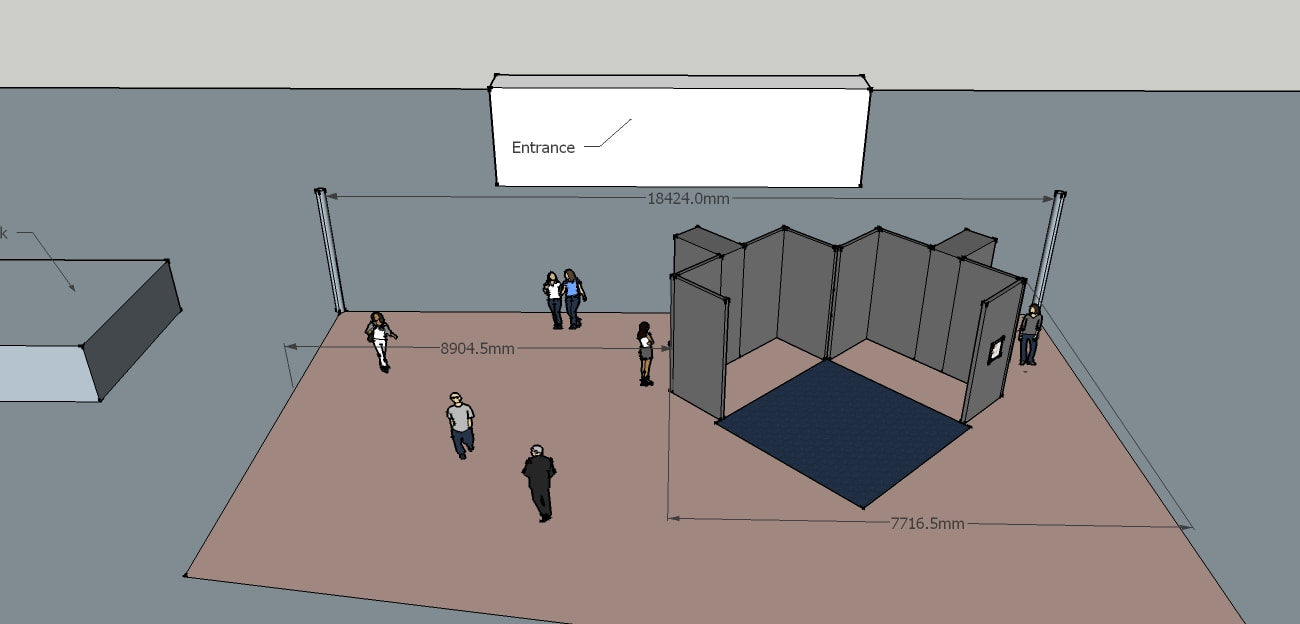Autograph (Kinetic Sculpture)
Chain of Events Exhibition
Manchester Central,
Manchester, UK, 2013
'The creation of these unique editions, marks the artist conspicuous by his absence and problemiaties our relationship with originality. Despite emphasising that artist and artwork are inseparable in our interpretation of something as an artwork, it is the viewer who decides what this might mean in the end.'
Chain of Events Exhibition
Manchester Central,
Manchester, UK, 2013
'The creation of these unique editions, marks the artist conspicuous by his absence and problemiaties our relationship with originality. Despite emphasising that artist and artwork are inseparable in our interpretation of something as an artwork, it is the viewer who decides what this might mean in the end.'
Autograph: from the Latin ‘autographum’, meaning "self-written".
Autograph is an awkward, hybrid, multidimensional creature; born to exist and perform in 4 dimensions. As the energy of a battery allows the hands of a clock to mark time, in Autograph that same energy is utilised to literally ‘mark time and space’.
Released from its static life on the wall the clock that is the beating heart of Autograph has come down to explore 4 dimensional space and to catalogue its journey in its writing. Its path through life, like all of our own, is never straightforward. Incidents and accidents affect how and what Autograph writes; the imperfection of its creation means that slight variances within its makeup add nuance and personality to these writings, indeed as time unwinds it is almost possible to decipher the time and ‘attitude’ at which the writing were made; this makes Autographs writings a form of time recording in themselves. But regardless of these quirks, Autograph will always continue its pedestrian progress through life.
Autograph owes much of its creation to the pioneering scientists of the 19th century and to the great gothic novels that they inspired. Be it Mendeleev, Pasteur or Curie; Stoker, Shelley or Stevenson, somewhere something of them is to be found at the heart of Autographs birth. Autograph also maintains the feel of a scientific instrument, perhaps it is a curio of a bygone or future age. It can sit, captive on a plinth or in a vitrine, or perhaps even in a Wardian Case slowly living out its pseudo-life for the entertainment of the public.
Whenever Autograph appears a crowd is drawn. Autograph performs, rising to its celebrity, to the extent that it will sign photographs of itself to commemorate the occasion of its performance. As a pseudo-life form Autograph relies on its prosthetic limbs both to carry it along through life and to chronicle that progression; with this thought the question arises, ‘do all clocks secretly dream of such a life?’
Autograph is an awkward, hybrid, multidimensional creature; born to exist and perform in 4 dimensions. As the energy of a battery allows the hands of a clock to mark time, in Autograph that same energy is utilised to literally ‘mark time and space’.
Released from its static life on the wall the clock that is the beating heart of Autograph has come down to explore 4 dimensional space and to catalogue its journey in its writing. Its path through life, like all of our own, is never straightforward. Incidents and accidents affect how and what Autograph writes; the imperfection of its creation means that slight variances within its makeup add nuance and personality to these writings, indeed as time unwinds it is almost possible to decipher the time and ‘attitude’ at which the writing were made; this makes Autographs writings a form of time recording in themselves. But regardless of these quirks, Autograph will always continue its pedestrian progress through life.
Autograph owes much of its creation to the pioneering scientists of the 19th century and to the great gothic novels that they inspired. Be it Mendeleev, Pasteur or Curie; Stoker, Shelley or Stevenson, somewhere something of them is to be found at the heart of Autographs birth. Autograph also maintains the feel of a scientific instrument, perhaps it is a curio of a bygone or future age. It can sit, captive on a plinth or in a vitrine, or perhaps even in a Wardian Case slowly living out its pseudo-life for the entertainment of the public.
Whenever Autograph appears a crowd is drawn. Autograph performs, rising to its celebrity, to the extent that it will sign photographs of itself to commemorate the occasion of its performance. As a pseudo-life form Autograph relies on its prosthetic limbs both to carry it along through life and to chronicle that progression; with this thought the question arises, ‘do all clocks secretly dream of such a life?’




